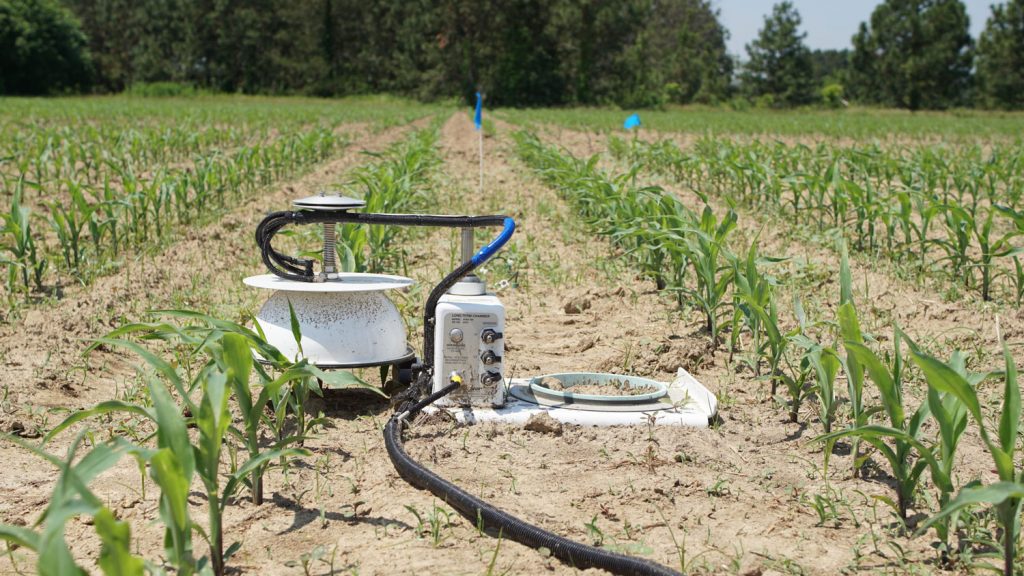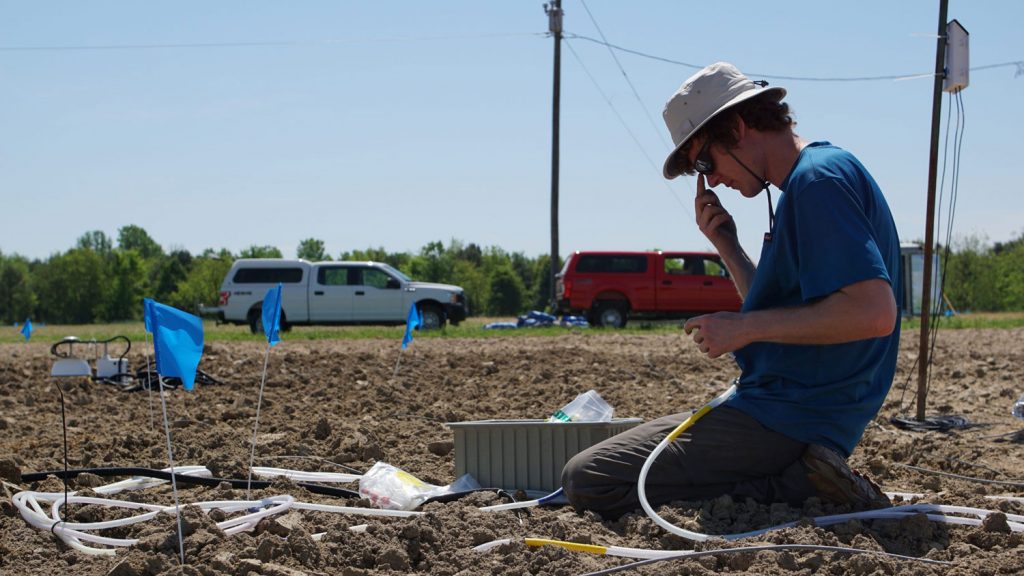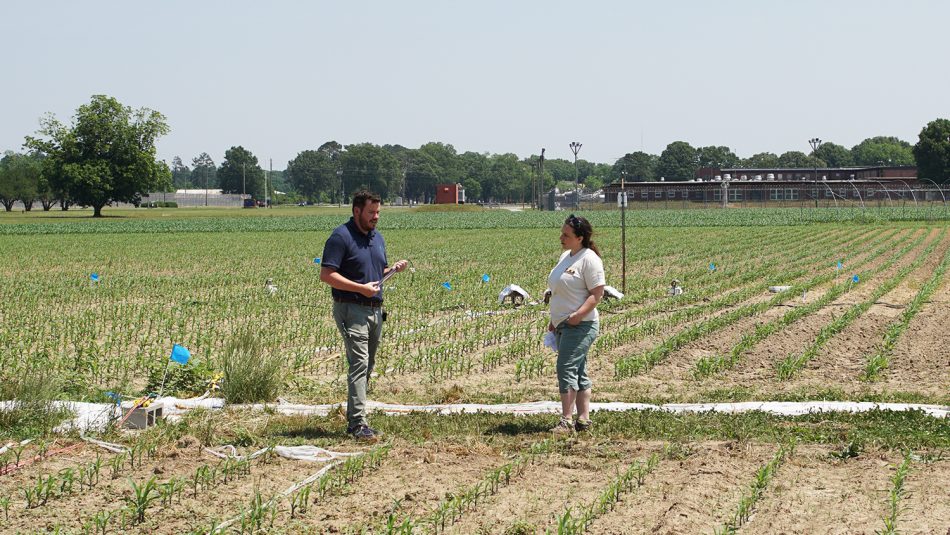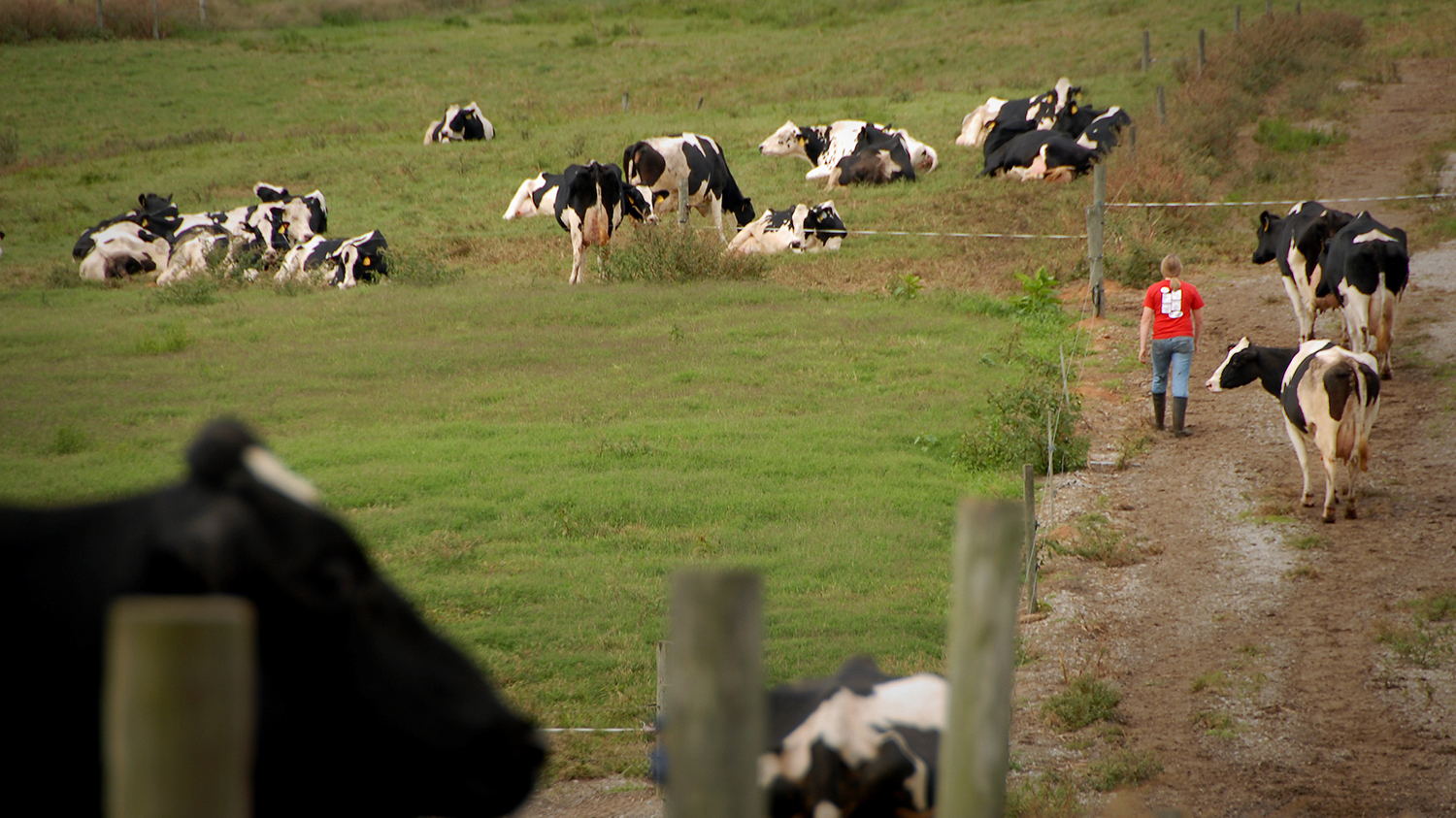By Jennifer Howard
Department of Crop and Soil Sciences
Carbon dioxide dominates the greenhouse gas (GHG) story planet-wide. But did you know there is a more potent GHG you probably haven’t heard about? It’s nitrous oxide (N2O), agriculture’s quiet but formidable contribution to climate concerns.
A Small Player with Big Impact
N2O represents only seven percent of all GHG emissions, rendering it a minor player compared to CO2 and methane. But N2O has significant, lesser-known, implications. In the atmosphere, N2O absorbs (and radiates) more energy than other gases and can linger for decades, according to the EPA. It’s not just an atmospheric sweater, but an electric blanket above us.
Scientists believe this double threat gives N2O 300 times more warming power than CO2, making N2O an important target for reduction. Because N2O is shorter-lived aloft (compared to CO2’s multi-generational existence), reducing N2O levels could have a quicker impact on climate stability.
Because the bulk of human-contributed N2O originates from agricultural soil management (up to 80% in the U.S.), smart farming principles could change the game. Researchers from NC State’s Crop and Soil Sciences and the Center for Environmental Farming Systems (CEFS) are pioneering research methodology to understand and harness the power of our soil to affect climate change.
Timing Research Right
GHG emissions are well-known indicators of biological soil activity, but are also influenced by plant growth and water availability. “Past N2O measurements were all over the board – and it has taken time to understand the factors creating this huge variation,” NC State professor Chris Reberg-Horton said. “Much GHG research has been done in the midwest but our southeastern soils are very different. Our shallow soils and distinct weather patterns create episodic, not steady, GHG releases. If we can quantify them we have a better shot at mitigating them.”

Continuous soil monitoring chambers provide real-time emission data. Photo by Center for Environmental Farming Systems (CEFS).
Previous efforts to monitor N2O release involved laborious static soil chamber measurements, providing periodic data snapshots. Now a team of NC State researchers led by professor Alex Woodley is finding surprising results from a new in-field continuous monitoring system. “We are getting real-time values every 150 minutes instead of once a week. We can see significant flux events when gases (like N2O and CO2) are released from the soil. With N2O it’s very much driven by rain. Now we capture the data as it happens.”
Soil microbes naturally release N2O by breaking down organic material. Supplementing nitrogen to boost crop performance is a key requirement in agricultural systems but carries the risk of increasing N2O emissions.
“Continuous measurements give us insight into microbial processes happening in response to temperature and water. Before it was just a stab in the dark on our timing of whether we caught the peaks of these emission events or not,” NC State Crop and Soil Sciences’ professor Alex Woodley said. “More nitrogen doesn’t necessarily mean more N2O. Soil carbon content, microbial activity and the nitrogen source are essential factors in whether the nitrogen is off-gassed as N2O.”
Woodley’s team installed continuous monitoring chambers across four farm system plots. Photo by Center for Environmental Farming Systems (CEFS).

Partners in Pursuit
Woodley’s project is housed at the CEFS Field Research, Education, and Outreach Facility on Cherry Research Farm in Goldsboro, North Carolina. The CEFS’s site offers a unique opportunity to conduct long term sampling across multiple farming systems to compare conventional cash crop systems (corn, soybeans) and organic systems, both with till and no-till subplots. CEFS recently released a new web page and video detailing Woodley’s project.
“This project is very important in assessing the GHG potential of various production systems,” CEFS Founding Director Nancy Creamer said. “It is nested in our 200-acre long-term farming systems research project, now in its 21st year. Our platform provides a nationally unique opportunity to study and compare emissions in several well-established farming systems and to relate this work to other soil processes studied over time at the same site. This is the kind of impactful research CEFS’s founders envisioned over 25 years ago.”
Shuijin Hu, another NC State researcher, is using Woodley’s project to study plant-microbial interactions. He times his data collection based on peak microbial activity marked by GHG flux events. His goal is to identify which microbes contribute to N2O release and what drives them. The interdisciplinary team’s overall goal is to correlate and quantify the microbiological activity with GHG emissions. This will allow them to assess soil management strategies to potentially manage agriculturally produced GHGs.
Agriculture’s Opportunity
“Understanding the relationship among soil factors can help predict and potentially mitigate off-gassing events. Our next step is to quantify these events – when nitrous emissions occur in large amounts and how long they last,” Woodley said. But because nitrous oxide results primarily from soil biological activity, emissions vary – greatly in some cases – over time, soil type, depth, and other factors. All of which underscores the need for regional data collection.
“Our project has evolved since 2015. We’d like to expand from the current single chambers to whole-field measurements to take advantage of CEFS’s diverse and sizable plots. Then, we can refine our GHG emission estimates based on various farming systems, including the livestock and agroforestry units. This data will help us model farming systems that balance crop yield and sustainability, and also help predict the impact of and recovery from environmental stresses, like floods and drought. Understanding these soil processes can move agriculture from a contributor to a mitigator of climate-affecting gases. We think the soil holds the solutions,” Woodley said.
In the realm of ‘doable’ mitigation, it’s hard to picture an improvement plan without agriculture.
“Since soil microbiology is a leading indicator of both soil and climate health, we have to ask ourselves ‘What can we do in the soil to affect the atmosphere?’,” Reberg-Horton said. With almost 40% of the earth’s land in agriculture, there is a big opportunity. “When you consider GHG reduction plans, many are impractical or will take hundreds of years to achieve. In the realm of ‘doable’ mitigation, it’s hard to picture an improvement plan without agriculture.”
“Enhancing sustainability through agricultural management is a key priority for our department,” NC State Crop and Soil Sciences’ Department Head Jeff Mullahey said. “We have several projects underway in biochar, carbon sinks, and bioenergy to answer questions about whether agriculture can reduce – or even remove – GHGs from the atmosphere. It’s a fundamental domain of our research holding promise for both the growers and citizens of our state.”
Want More GHG Progress?
Challenging the boundaries of agriculture and the environment is what we do in Crop and Soil Sciences. To hear the latest findings from our team of crop improvement and environmental stewards, subscribe to our weekly Friends of Crop and Soil Sciences news brief.
If you are a student interested in environmental sciences, investigate our degree programs including our soil programs deep dive or get a personal email tour of our undergraduate offerings. Changing agricultural perceptions is just part of how we are growing the future.
- Categories:



